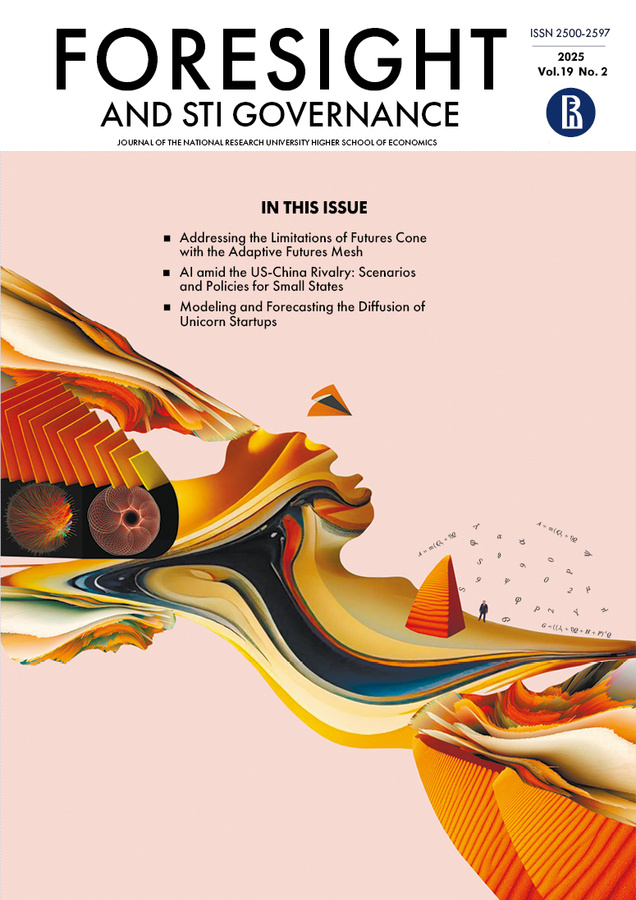Vol 12, No 3 (2018)
- Year: 2018
- Articles: 8
- URL: https://journal-vniispk.ru/1995-459X/issue/view/23534
STRATEGIES
Quiet Contributors: The Role of the Arts, Humanities and Social Sciences in Innovation
Abstract
 6-12
6-12


Research Programmes that Address Societal Challenges — Aligning Policy, Implementation, and Expected Impact
Abstract
 13-19
13-19


The Future of the Italian Electricity Generation Sector. An Analysis of the Possible Strategic Models
Abstract
 20-28
20-28


INNOVATION AT COMPANIES
The Role of IT-Management in the Digital Transformation of Russian Companies
Abstract
 53-61
53-61


Enhancing Innovation Performance in Companies
Abstract
 30-33
30-33


Internationalization and Innovation in Emerging Markets
Abstract
 34-42
34-42


Personnel Development in Chinese Innovation-Active Companies
Abstract
 43-52
43-52


The Impact of Externalities on the Innovation Activity of Russian Firms
Abstract
In this paper, we analyze the impact of externalities on firms’ capacity to develop and implement innovations. We evaluate a Probit model containing both firm level factors and regional factors, such as the institutional environment, state support, and human capital. The dependent variable is a dummy variable reflecting the involvement of a firm in innovation activity. We employ data provided by BEEPS 2012-2014 for firm-level indicators and data provided by the Russian Federal State Statistics Service for region level indicators. The results confirm that at present the most important external factors affecting the innovation activity of Russian firms are state support, both at the firm level and at the regional level, economic situation in the region, institutions, and quality of human capital. At the same time, we found several factors such as political stability, tax policy, and investment risks to be insignificant. These results require further analysis. We also found that the impact of the factors mentioned above depends on whether a region receives state support. The results imply that a differentiated policy that considers regional characteristics will probably be more effective than a uniform policy on innovation.
 62-72
62-72











